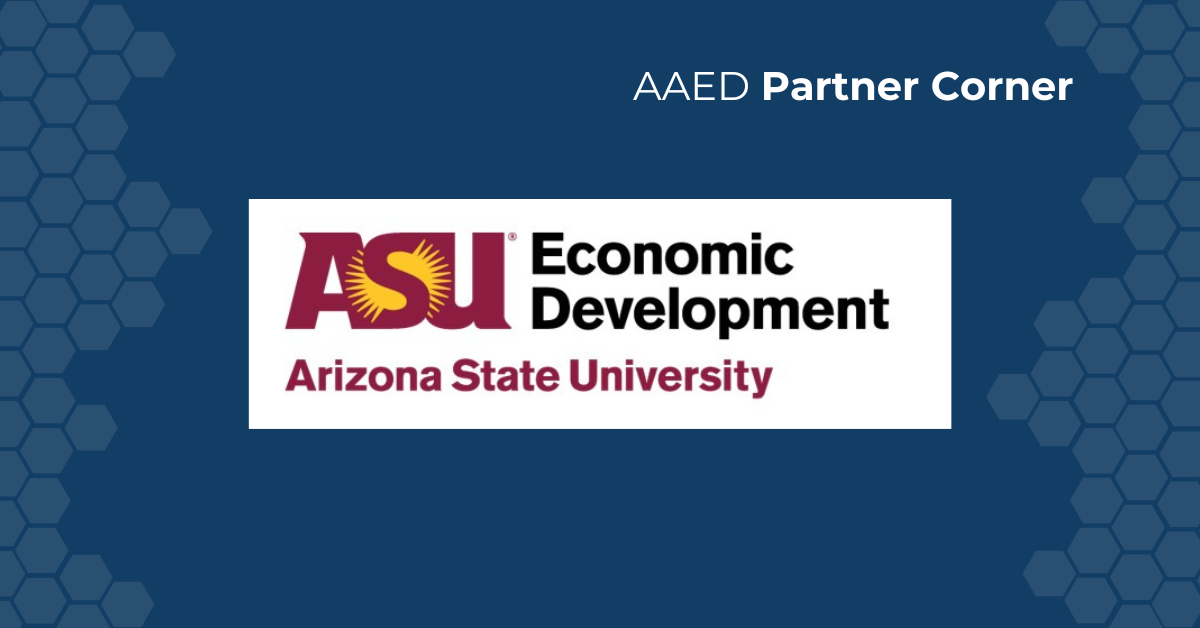The Role of Higher Education Institutions in Accelerating Economic Development
Lessons from Arizona State University, whose economic impact on the state is $32 billion.
By Kimberly Hanes, Associate Director, Economic Development and Innovation Zones, Arizona State University
Institutions of higher education play a critical role in local and state economic development, drawing on their resources, expertise, and community relationships to generate new opportunities for growth. At Arizona State University (ASU), the Office of Economic Development is at the forefront of advancing Greater Phoenix’s economic goals by aligning workforce development with industry needs, sharing institutional assets to attract businesses, and fostering strategic engagement opportunities. By applying ASU’s approach, other colleges and universities – even those without dedicated economic development teams – can become powerful catalysts for regional growth.
Align Workforce Development with Industry Needs
In today’s landscape, talent development is essential to economic growth. The Arizona Commerce Authority reports that Arizona achieved record-breaking economic development impacts in 2024, driven by the state’s top-ranked workforce. A skilled and adaptable workforce is crucial in business site selection, and higher education institutions can further enhance these efforts by:”
- Matching Academic Programs with Regional Priorities: Engage regularly with local municipalities and economic development agencies to understand the region’s leading industries. Align academic programs with these priorities to strengthen the region’s available workforce and increase its appeal to prospective businesses.
- Prioritizing Upskilling and Reskilling: Employers increasingly value opportunities to upskill their workforce and support internal advancement. Offer customizable non-credit programs and credentials that align with leadership, AI, soft skills, and technical skills specific to industry needs.
- Engaging Business Leaders: Invite local business leaders to provide feedback on curriculum and provide experiential learning opportunities for students. This enhances student education and strengthens ties between the institution and the local business community.
Share Institutional Assets to Attract Businesses
Higher education institutions possess resources that can be instrumental in attracting and retaining businesses. By providing access to these assets, colleges and universities can help companies establish and expand their operations. Key strategies include:
- Offering Access to Specialized Facilities: Many higher education institutions house state-of-the-art equipment and expertise in dedicated research spaces, sometimes called Core Facilities. Such equipment could be centrally managed, administered by an academic department, or belong to specific faculty. Offering businesses pay-per-use access to specialized equipment and expertise helps them scale and grow within the local region.
- Facilitating Co-Location Opportunities: Proximity to faculty, students, and research is a major draw for growing companies, while industry connections help universities stay innovative. Offer temporary office or lab space at market rates to relocating companies as they build out permanent facilities. Consider partnering with regional accelerators or incubators to provide affordable space for startups, supporting long-term economic growth and entrepreneurship.
- Hosting Business Delegations: Collaborate with local economic development agencies to host visiting business delegations, showcasing the institution’s capabilities and resources. For example, invite faculty experts to present or offer tours of key facilities, equipment, and assets that support business success.
Foster Strategic Engagement Opportunities
Effective collaboration between higher education institutions, municipalities, and economic development entities requires a proactive and strategic approach with dedicated personnel. To maximize impact, institutions should adopt the following best practices:
- Facilitate Easy Collaboration with External Partners: Create a clear avenue for industry and economic development agencies to connect with the institution. A concierge-style service that directs external groups to the right teams can prevent stagnation and delays, positioning the institution as a proactive and reliable partner.
- Participate in Local Economic Development Boards: Ensure institutional representation on regional economic development boards and advisory groups. This presence helps maintain a direct connection with key stakeholders and allows the institution to contribute to strategic planning efforts.
- Support Site Selection Efforts: Collaborate with state commerce authorities and regional economic agencies on site-selection initiatives. This may include presenting to prospective companies interested in the region, providing data on workforce capabilities, and contributing to project proposals.
- Integrate Economic Development Responsibilities: For institutions without dedicated economic development teams, assign economic development responsibilities to a staff member with broad institutional knowledge and strong faculty relationships. This person should be empowered to engage with external partners and mobilize subject matter experts as needed.
By taking these steps, higher education institutions can play a pivotal role in driving economic growth and enhancing regional competitiveness. Through workforce alignment, resource sharing, and strategic collaboration, colleges and universities can effectively advance local and state economic development efforts while strengthening their own institutional missions.

